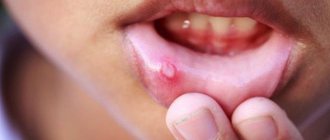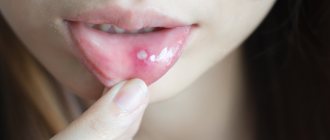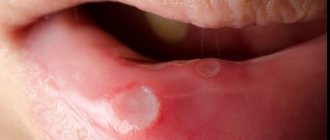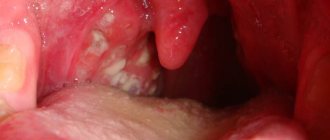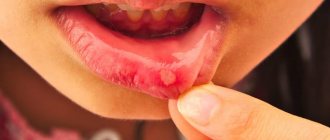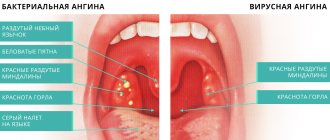Stomatitis is one of the most common dental diseases, which is expressed in damage to the oral mucosa. It occurs in both adults and children and requires urgent treatment. Treatment of stomatitis in children is usually required for children with weakened immune systems. There are many ways for infection to enter a small organism.
Urgently contact the dental department of the CELT clinic if your child exhibits the following symptoms:
- increased temperature;
- no appetite;
- a white coating appears on the gums;
- ulcers appeared in the mouth;
- lymph nodes hurt.
We have everything to carry out effective, prompt and painless treatment of stomatitis in children of any age. Bring to us children under one year old, 2-3 years old and older - and we will select effective treatment for him in each individual case.
Consultation with a pediatric dentist (pedodontist) - RUB 1,000.
Apexification with the application of a temporary filling (1 channel) - 1,500 rubles.
Filling the root canals of baby teeth - 4,000 rubles.
Installation of insulating gasket "VITRIBOND" - 800 rubles.
At CELT you can get advice from a dental specialist.
- Cost of consultation with a pediatric dentist (pedodontist) – 1,000
Make an appointment
Causes and types of stomatitis
Treatment of stomatitis in young children is carried out by treating the affected areas with special medicinal compounds, the choice of which is carried out in accordance with the etiology of the disease. Treatment is prescribed by the pediatric dentist after examining the small patient and identifying the cause and nature of the disease.
The disease can develop due to bacteria entering the mouth through dirty hands or cutlery, as well as due to a weakened immune system. The spread of pathogenic bacteria in a child’s body occurs at extreme speed due to the vulnerable mucous membrane. An additional factor is weak salivation, which causes a lack of hydration. Excessive dryness leads to cracks into which bacteria penetrate and cause disease.
Stomatitis often develops while taking pharmacological drugs. To avoid progression of the disease, you need to stop taking antibiotics. During the consultation, the decisive factor is the observations of the parents. They are the ones who can explain the cause of the disease (injury to the mucous membrane, allergies, taking antibiotics).
What can cause stomatitis?
Many factors can lead to inflammation of the mucous membrane: from banal mechanical damage to disruptions in the body that are not related to the dentist’s field of work.
The following causes lead to stomatitis :
- neglect of oral hygiene recommendations;
- injury to the mucous membrane from sharp edges of teeth or fillings, dentures or other objects;
- dental diseases - caries, tartar, etc.;
- allergies - not only to food, but also to hygiene products and even dental materials;
- various diseases - from viral to endocrine, such as diabetes;
- poorly made prostheses;
- expired prostheses;
- metabolic or immune disorders;
- problems with microflora in the body;
- direct contact with the mucous membrane of pathogenic microorganisms;
- bad habits - smoking, drinking strong alcohol;
- reaction to certain medications.
The mucous membrane is much easier to damage than the skin. Especially in the mouth, where it is always exposed to temperature changes, touched by teeth, dentures, braces and solid food particles.
The cause of dental disease is mainly pathogenic bacteria (for example, caries is caused by streptococcus), which also harm the gums. And tartar is a hardened plaque that contains not only microbes, but also other unfavorable components. In addition, if the stone is subgingival, then the mucous membrane suffers first.
In many cases, allergies are discovered suddenly. The patient may not be aware of its presence, since he calmly eats any food. However, chemicals in toothpaste or mouthwash can cause a reaction. Studies have shown a negative effect on the mucous membranes of sodium lauryl sulfate, contained in some toothpastes. If the problem began soon after the restoration or treatment of the tooth, then you should consider the possibility of the body's response to the filling or crown material.
Decreased immunity can also cause deterioration of gums. And metabolic disorders affect not only the supply of microelements to the body’s tissues (including the mucous membrane), but also the composition of saliva, a decrease in the protective properties of which makes the oral cavity vulnerable to bacteria. Approximately the same can be said about the beneficial microflora: if it is in order, it helps to suppress the work of harmful microorganisms; if it is disrupted, the microbes attack vulnerable areas.
The cause of stomatitis in adults and children can be obvious - direct entry into the mouth of a large number of pathogenic bacteria. They can get from contaminated surfaces. Simply put, if a child constantly puts various objects into his mouth, stomatitis may occur. If an adult has carried through the years the bad habit of biting nails or pens, this can also contribute to the appearance of inflammation.
Medicines can have different effects on the body, in particular, they can affect the immune system, microflora and saliva production. Dry mouth is promoted by antihistamines and antihypertensive drugs, anticoagulants, antipsychotics, antispasmodics, etc. And a low level of saliva production provokes the growth of bacteria. Antibiotics and anti-asthma medications can lead to Candida infections in the mouth. There can be many options, including the influence of the sugar contained in the medicine. stomatitis often appears in adults as a result of treatment for a completely different pathology.
Aphthous stomatitis
Aphthous stomatitis is characterized by the appearance of a large number of aphthous stomatitis on the oral mucosa. These are round or oval ulcers covered with plaque. The causes of this disease are as follows:
- past infectious diseases: influenza, measles;
- lack of vitamin B12 and microelements in the body;
- oral injuries;
- gastrointestinal diseases.
For the most effective treatment of aphthous stomatitis in children, our specialists pay special attention to identifying the cause that caused it. Treatment of acute stomatitis in children is simply necessary, since the disease itself is very difficult. Its characteristic feature is unpleasant pain symptoms, which intensify when the ulcers are touched with hot or sweet food.
Treatment of purulent stomatitis in children requires an integrated approach. It consists not only in local treatment of ulcers with medications, but also in proper diet, frequent drinking and regular oral hygiene.
Symptoms of the disease
Symptoms depend on the type of pathology, but there are common clinical manifestations. As a rule, the disease does not begin acutely. The mucous membranes become red, swelling, pain, and a burning sensation appear in the affected area. You can see what stomatitis looks like in the photo.
If it is a bacterial infection, then after a day an ulcer appears at the site of infection with a red halo radiating from the center. The ulcer is covered with a white coating. During this period, salivation increases and an unpleasant odor appears. Pain bothers the patient not only when eating, but also at rest.
Pimples and ulcers appear anywhere in the oral cavity; in severe cases, stomatitis develops in the throat. Stomatitis on the tongue is especially painful, since there are many nerve endings there. Some types are characterized by bleeding gums.
With further development of the pathology, the temperature may rise, the lymph nodes may enlarge, and symptoms of intoxication may appear - weakness, nausea, lack of appetite.
Viral stomatitis
The name of viral stomatitis speaks for itself: it is caused by influenza, herpes, measles and chickenpox viruses.
Symptoms of the disease at an early stage include weakness, lethargy, a slight increase in body temperature, and pain in the mouth. When examining the oral cavity, you can see the appearance of small red ulcers on the mucous membrane and tongue. Treatment of viral stomatitis in children depends on the age of the child, the state of his immunity and the stage of the disease. As a rule, our experts recommend treating the oral mucosa with anti-inflammatory drugs and decoctions, and lubricating the affected areas with vitamin A.
Candidal stomatitis
Candidal stomatitis is known as thrush. It can appear in children even in infancy, and it is caused by saprophytic fungi, which become pathogenic when immunity decreases. With this type of stomatitis, white spots appear in the child’s mouth. In addition, there may be an occasional increase in temperature and the appearance of photophobia. Infection of a child can occur through contaminated dishes, toys or pacifiers.
Treatment of candidal stomatitis involves undergoing daily procedures in the dental office, rinsing the mouth with alkaline solutions, and taking vitamins.
Treatment of stomatitis in a child cannot be delayed, otherwise this may lead to relapse of the disease. CELT pediatric dentists recommend regular preventive examinations that will help prevent the development of serious dental diseases, including stomatitis!
Causes of stomatitis
The imperfection of local and general defenses of the child’s body makes the mucous membranes of the oral cavity vulnerable to adverse factors. And the healthy curiosity characteristic of every child has made stomatitis one of the most common diseases among children. Sometimes, for the development of an illness, it is enough to taste any less than sterile object. The main causes of the disease include the following:
- insufficiently good oral hygiene;
- minor injuries - cheek biting, scratch, etc.;
- burns, including chemical burns;
- exposure to pathogens from unwashed hands or dirty toys.
Dentists focus on stomatitis associated with biting the inside of the cheek.
This is often associated with recent dental treatment under local anesthesia. For some time after the procedure, there is reduced sensitivity in the area of the lip or cheek, so you need to eat food after treatment very carefully and only after you have waited for the recommended period of time - usually from 1 to 2 hours. The likelihood of developing stomatitis for these reasons increases after infectious diseases, previous interventions, hypothermia and other factors that contribute to a decrease in protective forces.
Treatment of stomatitis in a child
The main rule is to immediately contact a specialist and not use any gels or ointments based on recommendations from the Internet. Each type of pathology is treated differently, so the dentist conducts a comprehensive examination. Additional consultation with an otolaryngologist or dermatologist is often required.
In complex therapy, proper oral care is prescribed and professional toothpaste is selected. Solutions and gels are required. If the form is viral, then antibiotics are used, and if it is allergic, then antihistamines are used. If necessary, medications are used to reduce the temperature (if there is fever and chills).
Prevention of stomatitis in children
- Be sure to clean all cutlery, bottle and pacifier. Boil periodically.
- You need to brush your baby teeth 2 times a day. Cleaning should be carried out by parents up to 6 years of age, and then show all the movements to the child and teach him proper oral hygiene.
- After eating food, you need to rinse your mouth with boiled or filtered water that is well removed from bacteria.
- Wash your hands and all toys regularly. Children often put their fingers or toys in their mouths - wean them off this (many pathogenic bacteria get into the mucous membranes).
- Visit your dentist 2 times a year for a visual examination and disease prevention.
- Do not give your child too hot or cold food. Avoid hard, spicy, sour and very salty foods. This will lead to injury to the oral mucosa.
- Avoid foods that cause allergies.
- Provide a healthy diet rich in minerals and vitamins. It is advisable to walk outdoors more often. All this helps strengthen the immune system and protect against stomatitis.
Features of treatment
To diagnose a disease, only a visual examination is often sufficient, but in some cases laboratory diagnostics are required to determine the causative agent of the inflammatory process and the sensitivity of bacteria to antibiotics. Treatment should be carried out by a dentist, and the treatment regimen is developed individually, taking into account test results, the age and well-being of the child, the causes of the disease, the area of mucosal lesions and other conditions.
If the question of how to treat aphthous stomatitis in children is decided individually, then recommendations regarding eating behavior and hygiene are general for all cases. Such recommendations include the following:
- avoidance of too hot or cold drinks and foods;
- following a hypoallergenic diet;
- refusal of food that irritates the mucous membrane. This list includes fatty, salty and spicy foods, marinades, solid foods;
- adding pureed and soft foods to the menu. This includes cream soups, porridges, pre-boiled meat;
- drinking enough liquid;
- careful adherence to oral hygiene: using brushes with soft bristles, rinsing the mouth after each meal.
Local drug treatment consists of the use of such agents as:
- rinses or irrigation solutions (for children who do not yet know how to rinse their mouths) with an antiseptic effect;
- ointments and gels that stimulate the restoration of mucous membranes;
- drugs for pain relief and burning sensation.
It is important to test the product before use: apply a small amount to the crook of your elbow. If there is no redness, burning, or rash, we can say there is no allergy - the product can be used for treatment.
In some cases, systemic drug therapy is indicated. Your doctor may prescribe antihistamines to combat the allergic reaction and relieve swelling. In order to increase the resistance of the child's body, immunomodulators may be recommended. The decision on the need for antibacterial therapy is made in the case of an extremely severe course of the disease, a persistent increase in body temperature, and identification of a bacterial pathogen in a smear.
Elevated body temperature and pain are indications for symptomatic therapy. The doctor may recommend non-steroidal anti-inflammatory drugs in a dosage and form appropriate to the age of the young patient. Sometimes it is advisable to use suppositories if taking the medicine in the form of a tablet or syrup causes pain or anxiety.
Treatment of infants additionally includes disinfection of toys and teethers that the baby may put in his mouth. A nursing mother should pay attention to breast hygiene: thoroughly wash her breasts after feeding using warm water and special products.
Sometimes it is advisable to use folk remedies. Thus, rinsing the mouth with chamomile can soothe inflamed mucous membranes and speed up the healing process. However, it is important to remember that such prescriptions can only complement the main course of treatment. Don't forget to consult your doctor about the possibility of using them. Some herbs are strong allergens, so it is important to ensure that you are not hypersensitive to them.
Warming, the use of honey and alcohol tinctures are prohibited, as all this can lead to a worsening of the condition and lead to serious complications. It is better not to self-medicate, but to show the child to a qualified specialist.
Treatment of aphthous stomatitis in children usually takes no more than 7–12 days. It all depends on the state of the child’s immune system, the severity of inflammation, the number and depth of ulcers.
How to care for a child after stomatitis appears?
Without the help of parents, a child will never get rid of the disease, because strict discipline is needed. You must follow all the requirements of the pediatric dentist and pay special attention to diet and pain medications.
Prefer soft food with a temperature of no more than 28o C. It is important that it has a balanced composition of carbohydrates, fats, proteins, vitamins, and minerals. Allergens, as well as spicy, sweet, sour and very salty foods, must be excluded from the diet. It is advisable to exclude citrus fruits due to their high acid content. After eating, rinse your mouth with filtered or boiled water.
Treatment includes the use of painkillers. The child will feel severe pain at first, which will interfere with sleep. Therefore, you need to regularly rinse your mouth not only with clean water, but also with medicinal balms. The affected area should be smeared with medicinal gel. All recommendations for treatment and pain relief will be given to you by your pediatric dentist during your consultation.
Make an appointment through the application or by calling +7 +7 We work every day:
- Monday—Friday: 8.00—20.00
- Saturday: 8.00–18.00
- Sunday is a day off
The nearest metro and MCC stations to the clinic:
- Highway of Enthusiasts or Perovo
- Partisan
- Enthusiast Highway
Driving directions


